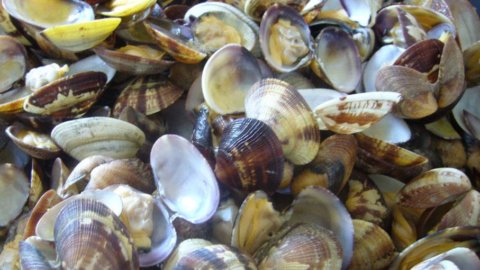I search "clams" in two of the most used search engines in the world and in addition to the news we are about to tell you, we find many websites and food blogs that recommend a thousand different ways to show us how to cook this particular shellfish: linguine with clams, clams alla pescatora, spaghetti with clams, courgettes and cherry tomatoes cooked by Benedetta Parodi, fettucce with artichokes and orange clams (they will certainly be delicious), how to clean and cook clams (there will be someone who doesn't know how to do it and who will look for it on the internet!). Well…we believe that in the coming months all these pages will see a big drop in the number of visits as it is now practically impossible to fish clams in the Adriatic Sea due to a European regulation which drastically limits its fishing.
What does this European directive impose? This is annex 3 of the European regulation 1967 of 2006 which prohibits the collection and marketing of clams with a diameter of less than 25 millimetres. Well, that annex 3 has been bringing Adriatic fishermen to their knees for some years, especially in the upper Adriatic, because the clam that populates this portion of the sea, the Chamelea gallina, does not grow and its diameter remains slightly less than 25 mm, stopping on average at 22 mm. And if some fishermen try to think of breaking the law by fishing and marketing these small clams, they could suffer fines of up to 4 euros. One can well imagine how clam fishing in the Adriatic is practically paralyzed as it becomes increasingly difficult to find clams larger than 2,5 cm.
As reported to the newspaper 'La Repubblica' by Attilio Rinaldi, biologist and president of the Marine Research Center of Emilia, the small size of the clams may depend "on the extraordinary and persistent supply of river water from spring 2013 to today". What does it mean? The excessive entry of fresh water into the Upper Adriatic Sea brought by the river Po has reduced the salinity of the sea. “The average flow rate of our river is 1.500 cubic meters per second. In spring 2013 there was a peak of 7.000 m2014. In 2.378 the average was 2015, with a queue in XNUMX. The clam - explains Attilio Rinaldi - is a marine animal that can tolerate drops in salinity but below certain values the valves are closed, their diet is reduced, bacterial infections appear and viral accompanied by deaths”.
So here's how this anomaly related to size of the clams. And for those few millimeters of difference, Adriatic fishermen harvest much less than in the past. In 1982 the clams had caught 120 thousand tons of clams while in 2014 only 20 thousand, six times less. It is clear that this regulation is penalizing the fishermen of Emilia Romagna beyond all measure and there is no shortage of protests. Many remember that this limitation on clam fishing comes from that same Europe which, however, wants to make cheese without milk. Practically in the Upper Adriatic, and in Romagna in particular, the clam market has now disappeared and furthermore, soon those fishermen will find themselves faced with someone who will try to sell them an "innovative Parmesan" made with powdered milk.





